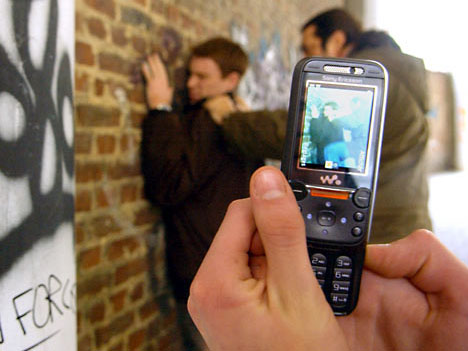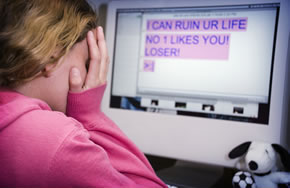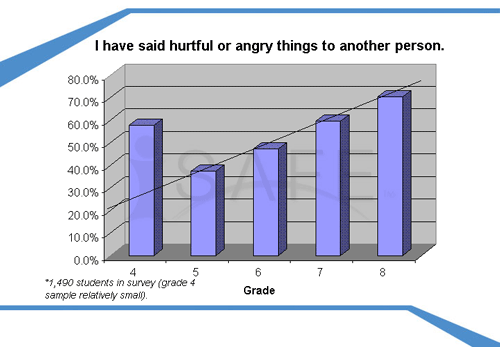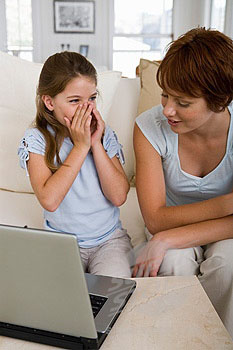Group4: "Team Sushi" (Lindsey Nguyen, Alyssa Bosch, Andrew Yip, Aaron Holway): Cyber-Bullying
Contents
- 1 Introduction
- 2 The Issue of Cyber-Bullying
- 3 What Exactly is Cyber-Bullying?
- 4 Methods of Cyber-Bullying
- 4.1 Instant Messaging/Text Messaging Harassment
- 4.2 Stealing Passwords
- 4.3 Blogs
- 4.4 Web sites
- 4.5 Sending Pictures through E-mail, Cell Phones, and PDAs
- 4.6 Internet Polling
- 4.7 Interactive Gaming
- 4.8 Sending Malicious Code
- 4.9 Sending Porn and Other Junk E-mail and IMs
- 4.10 Impersonation (Posing as victim)
- 5 Who is Affected by Cyber-Bullying?
- 6 Background Information on Cyber-Bullying
- 7 Statistics on Cyber-Bullying
- 8 Harmful Effects/Consequences
- 9 Case Studies
- 10 Cyber Bullying and the Law: You Do The Crime, You Do The Time!
- 11 Prevention
- 12 Support from the Community
- 13 Final Note
- 14 Information Review
Introduction
Team Sushi
- CPSC 203 T23
- Group 4
- TA: Mina Askari
- Topic: Cyber-Bullying
Group Members
- Lindsey Nguyen
- Alyssa Bosch
- Andrew Yip
The Issue of Cyber-Bullying
Cyber-bullying involves the use of communication and information technologies to mentally harm others. This may sometimes lead to cause victims to have physical harm inflicted on them on by others or even by themselves.
What Exactly is Cyber-Bullying?
Cyber-Bullying is when a person or a group either/or taunts, threatens, harasses, and embarrasses others through the use of simple information and communication technology. This technology includes the usage of mobile phones through texting, and internet through e-mail, web sites, gaming, messaging and through many more methods. Cyber-Bullying can ruin the reputation of a person and make them feel disliked, hated, and even make the person question their self-worth. Cyber-Bullying can often cause fights and often escalate to a point where people are killed or commit suicide after an incident. With this, Cyber-bullying can escalate into a serious criminal offense. The parents of Cyber-bullying victims will sometimes try to press charges against the Cyber-bully and can typically result in a person to have their ISP or IM accounts taken away as a terms of service violation. Cyber-Bullying also usually does not happen only once in the same instance. It can build up, get worse, become more frequent and more harsh.
Methods of Cyber-Bullying
Instant Messaging/Text Messaging Harassment
- Hateful/threatening messages sent
- Creating a screen name very similar to another’s with the intent of saying inappropriate things while posing as the other person.
- Text wars/attacks, leaving victim with huge cell phone bill
- Sending death threats
- Sending inappropriate photos/videos
Stealing Passwords
- Stealing another’s password and posing as them on their account. (chatting with others and saying mean/offensive things)
- Use password to change victims profile to include sexual, racist/inappropriate things
- Once password stolen can use to hack onto computer.
Blogs
- Use of blogs to damage others’ reputation/invade their privacy
- Setting up a blog or profile page pretending to be their victim and saying things designed to humiliate them.
Web sites
- Create Web sites to insult/endanger another/group of people
- Post others personal information/pictures
Sending Pictures through E-mail, Cell Phones, and PDAs
- Sending mass emails to others that include nude/degrading pictures of others (once sent is passed around to hundreds of others within hours there is no way controlling where it goes.
- Sending inappropriate pictures directly over phones/posting them for others to see or forwarding the messages on.
- Taking photos of others in the locker room, bathroom, dressing room etc. and posting online/sending to others
Internet Polling
- Who's Hot? Who's Not? Who is the fatest/ugliest person in the school? Polls such as these are very common on internet and are very offensive.
Interactive Gaming
- Verbal abuse over internet gaming (live internet phones / chat)
- Threatening/rude language
- Locking others out of games
- Hacking onto another account
- Passing false rumours
Sending Malicious Code
- Sending viruses/spyware/hacking programs to victims (allows bully to control victim’s computer)
Sending Porn and Other Junk E-mail and IMs
- Sign victim up for porn sites etc. when receive thousands emails parents get involved causing home consequences’ for victim.
Impersonation (Posing as victim)
- Post provocative message in a hate group's chartroom posing as the victim
- Sending messages posing as victim saying hateful/threatening things
Who is Affected by Cyber-Bullying?
Cyber-Bullying affects a vast range of people. Most commonly, Cyber-Bullying affects kids and teens in Junior High and High Schools. However, Cyber-Bullying can find itself into the workplace where colleagues may even start a rumor about each other. Competition is great in the workplace, and people will do anything to make themselves look better and/or make someone look worse. Cyber-Bullying even affects celebrities such as Zac Efron, Miley Cyrus and Selena Gomez. Also, Cyber-Bullying may also find its way into the students of post-secondary institutions' lives. Cyber-Bullying affects countless people every single day.
Background Information on Cyber-Bullying
New technologies such as the internet and cell phones have created a whole new world of social communication. Email, websites, instant messaging, chat rooms and text messaging have become a very important part of young people’s social lives. While, for the most part, these technologies are a great way to stay in touch with friends, there is a rise in young people are using them to harass and humiliate others, an act known as cyber bullying. According to a recent survey conducted by U.C.L.A. students on teens ranging in age from 12-17, 41% of teens surveyed reported 1-3 incidents of cyber bullying so far this year, 13% reported 4-6 incidents, and 19% reported 7 or more incidents. Together, 73% of the students surveyed reported to being bullied online, yet only 1 in 10 told their parents about it. Why? For the most part these teens recognised the importance of the internet to their social lives and were worried their parents may restrict their access. In other cases kids assume it’s just happening to them and they “just need to learn to deal with it.” The internet has created a world distant from adult knowledge and supervision. Cell phones and computers are accessible almost anywhere and everywhere, making it very difficult for victims to escape cyber bullying; some children can no longer call home a refuge from the peer pressures of school.
In many ways, bullies over the web can be far more hurtful then face-to-face bullying, as online bullies tend to hide behind anonymity. According to research conducted in 2005 by The Media Awareness network, 60% of students have pretended to be someone else while online, and of those 17% said they did so to “act mean and get away with it.” Because people are able to hide their identities over the web they feel freer to do and say things online they never would in person. Not only that, but it is nearly impossible to determine who is really responsible for online bullying. Even if you can identify the address of the sender, there is no way of determining who actually sent the email or posting. In many ways the internet has taken away the responsibility of individuals to conduct themselves respectfully, as there is no way of holding them accountable for their actions, fear of punishment is diminished. In addition, the impersonality of the web affects young people’s ethical behaviour; they choose to say things online as there is no tangible feedback of the affect their actions have on others. They cannot see the recipient’s reactions nor how they are affected emotionally, minimizing their own feelings of guilt and remorse.
Cell phones with internet connection and digital cameras have further increased the dimensions of cyber bullying. These technologies make it extremely easy to capture and distribute hurtful things. In one case reported, someone used a camera phone to photograph an overweight classmate in the shower after gym class. This photo was distributed to most everyone in the school within a few minutes of being taken via text messaging and email.
Real world bullying occurs in schoolyards, classrooms or public places where teachers or other adults can intervene. Cyber bullying is conducted outside the radar of adults often causing the victim to feel helplessly alone. When schools try and get involved by disciplining the student for cyber-bullying actions that took place off-campus and outside of school hours, they are often sued for exceeding their authority and violating the student's free speech right. They also, often lose. Schools can be very effective brokers in working with the parents to stop and remedy cyber-bullying situations.
Statistics on Cyber-Bullying
During the 2003-2004 school year I-SAFE America surveyed students from across the USA on the topic of Cyber Bullying.
Cyber-Bullying Statistics:
- 42% of kids have been bullied while online. 1 in 4 have had it happen more than once.
- 35% of kids have been threatened online. Nearly 1 in 5 have had it happen more than once.
- 21% of kids have received mean or threatening e-mail or other messages.
- 58% of kids admit someone has said mean or hurtful things to them online. More than 4 out of 10 say it has happened more than once.
- 53% of kids admit having said something mean or hurtful to another person online. More than 1 in 3 have done it more than once.
- 58% have not told their parents or an adult about something mean or hurtful that happened to them online.
(Based on 2--4 i-SAFE survey of 1,500 students grades 4-8)
And a similar Canadian study held a survey with 2,500 responses between Dec. 20, 2006 to Jan. 20 2007 where over 70% of the students who responded to the survey reported that they have been bullied once, compared to the 44% that admitted to having bullied someone online. As for 38% of the survey reported experiencing cyber bullying within the past 3 months. The survey also showed that 76% of the respondents reported name calling and being mad to feel bad, whereas 52% reported having rumors spread about them, and then 38% reported being threatened or scared all through cyber bullying. Cyber bullying takes place 77% of the time through instant messaging, 37% by e-mail, and 31% through social networking such as Facebook, MySpace and others. When it came to confronting the problem the statics showed that 43% did nothing, 32% confronted the person who bullied them. and 27% told a friend about it. However only 39% said that taking action and doing something about it helped them feel better, compared to 35% who found that it had no impact. But at least 31% said that confronting the problem helped stop the bully from doing it again. Over half of the sample population that responded to this server were between the ages of 13 and 15.
It is also proven that girls are more likely than boys to be the target of cyber bullying. As there is a direct correlation to the amount of time girls spend online and the likelihood that they will be bullied. According to extensive research performed on middle school age students and teenagers, the fastest growing problems within the world of cyber bullying are:
- Stealing an individual's name and password to a social networking site, and then using this information to spread and post rumors or other damaging information.
- Humiliating individuals trough altering photographs using software's such as PhotoShop.
- Creating confrontational and mean spirited online polls about an individual to induce humiliation
Harmful Effects/Consequences
Cyber bullying strips people of self-confidence, and is linked to depression, anxiety, as well as insomnia. It can also lead to a drop on social and academic skills. Research shows that the effects of cyber bullying can be much worse than face to face bullying, as there is less awareness bout it, as well as few places for the victims to hide. The victim is also humiliated or bullied in front of a bigger audience which makes it more humiliating.
Research has shown serious effects and consequences of cyber bullying, such as lower self-esteem, increased suicidal ideation, and a variety of emotional responses which can be cyber bullying back, being scared, angry as well as depressed. One of the most damaging effects are those when the victim may start to avoid social activities, and their friends.
During a cyber bullying poll Dr. Sameer Hinduja along with Dr. Justin W. Patchin it was summarized to how 38.6% of females felt frustrated in comparison to the 27.5% of males, and 36% of females felt angry when only 24.3% of males felt angry, and lastly 25.2% of females felt sad compared to the 17.9% males who felt sad.
It is clear that the effects of cyber bullying are not only limited to feelings being hurt, but can extend to victims psyche's being permanently damaged.
Case Studies
Megan Meier
There have been many cases of cyber bullying that have been brought to our attention by the media and other news sources. One of the most well known and tragic cases of cyber bullying was the case regarding the death of a 13 year old Missouri teenager, Megan Meier, who committed suicide when she was bullied by a “friend” that she met on the social networking website, MySpace. Soon after Meier opened up an account on MySpace, she began to exchange messages with a stranger who claimed to be a 16 year old boy named “Josh Evans.” But little that Meier know that this supposedly claimed to be an attractive teenage boy, was actually the mother of one of Meier’s friends, Lori Drew. The reason why she started the fake account was to monitor to see if Meier was gossiping about Drew’s daughter. On October 15th 2006, when Meier was exchanging messages with “Josh Evans”, she noticed that the usual friendly messages turned hostile. The tone of his messages became very “negative” and troubling. Some of which said,
"I don't know if I want to be friends with you anymore because I've heard that you are not very nice to your friends"
"Everybody in O'Fallon knows how you are. You are a bad person and everybody hates you. Have a shitty rest of your life. The world would be a better place without you."
Along with these hurtful messages, several more upsetting messages were sent which said that Meier was fat and that she was a slut. Josh also threatened Meier that the messages that were exchanged between them were going to be posted into a bulletin where everyone on the internet can see. Meier informed her mother of the dilemma that she was involved in, but Meier’s mother was more concerned about the inappropriate language that her daughter was using online. As the argument escalated, Meier was told to log off and she was forbidden from going online to MySpace. A very upset Meier stormed upstairs where she was later found to be hanging by the neck in her closet. With attempts to revive Meier, it was already too late, Meier was pronounced dead.
Ryan Patrick Halligan
Ryan Patrick Halligan was a 13 year old teenage bot from Essex Junction, Vermont. Ryan was oftened teased by bullies and classmates because of his learning disorder. One day at school, a fight broke out between himself and a bully, but was immediately broken up a staff member from the school. Strangely, in the beginning of middle school, Ryan had said that the bully and himself had been getting along with each other and had become friends. But when Ryan told his new found friend something personal, the bully used this information against Ryan and threatened to tell the other people. On a instant messaging service, AIM, Ryan was made of because of the speculation that Ryan might be gay. A girl that Ryan had a crush on often exchanged conversations with Ryan on AIM, but she she only did that in order to gain personal information. Later on, the conversation between Ryan and the girl turned hostile when the girl called Ryan a "loser", she also forwarded the conversation between Ryan and herself to other classmates, where they again, made fun of him. Ryan informed his father about the situation, Ryan's father took the computer privileges away from Ryan. On the same night, Ryan waited until his family was sleeping, where he then went to bathroom and hung himslef.
Cyber Bullying and the Law: You Do The Crime, You Do The Time!
Cyber bullying can be considered under various branches of the Canadian Justice System, some of those branches include the Criminal Code, The Canadian Human Rights Act, and The Charter of Rights and Freedoms.
Under Criminal Law, there are two approaches to cyber bullying:
- Harassment- when an individual says something that brings upon fear on another individual and endangering their safety and well being. Even if it was unintentional, they can still be charged if the victim feels threatened. An individual that is criminally charged with harassment can face up to ten years in prison.
- Defamatory Libel- a statement that is directed to someone that could harm their reputation. Under the Criminal Code, an individual charged with defamatory libel can face up to five years in prison.
Under The Canadian Human Rights Act, a person is entitled to their freedom of speech but if they are spreading hate or committing discrimination based on factors like age, sex, sexual orientation, religion and so on, they the violating the Canadian Human Rights Act.
Section 2(b) of The Charter of Rights and Freedoms states that,freedom of expression, thought and opinion is guaranteed to all Canadians (but not when this expression is considered violent).
The Legal consequences mentioned above only apply to adults (18 years old and over) who commit cyber bullying, there is still an on-going debate on youth who commit cyber bullying.
A youth could be subject to a fine or it could be considered an act of juvenile delinquency.
Prevention
Always keep computers in a commonly used space.
- So parents may keep an eye on their children during their computer usage.
Never give out your personal information such as passwords, PIN numbers, addresses, phone numbers etc.
- Keeping this information to yourself will protect you from identity theft, stalking, further harassment etc.
Do not post or say anything on the Internet that you would not want the whole world to read.
- This information can leak and may be spread to people that you do not want the information to be spread to.
Don’t believe everything you see or read; people can pretend to be anyone behind a computer screen.
- An example of this is a 50 year old man pretending to be a 15 year old girl, or someone pretending to be someone else to gain your trust.
Treat people just as you would treat them if you were in person, and do not respond to to someone that treats you in a way that you don’t like.
- Anything you say online can be just as real as if you were speaking in person, and therefore real emotions appear.
Only send messages to others when you are calm, not when you are angry or mad.
- When you are not in a calm state, you might regret what you have sent earlier and not meant any of it.
Do not open messages from people that you don’t recognize.
- These messages could contain anything from viruses that destroy your computer or to keyloggers that steal all your personal information.
Never reply to harassing messages.
- This may lead to more frequent messages being sent and could become more serious.
Know how serious cyber-bullying really is.
- Cyber-bullying can lead to the deaths of many and lowers the self-esteems of children on a daily basis.
Tell others and do not delete messages if you believe you are a victim of cyber-bullying.
- Get help from a parent, teacher or even the police if you believe you are being cyber-bullied. Do not wait for things to escalate.
Support from the Community
Cyber bullying is an on-going social and technological issue that has taken the lives of many and affected the lives of all. The fight against cyber bullying recieved an enormous amount of support from people all over the world. Here are some of the things that people from all over the world are doing ot bring cyber bullying to its minimum:
- Support Websites like "Laugh at it and you're part of it" inform people about cyber bullying and hopefully they will used the information acquired to help other people.
- The Wired Safety International Stop Cyber Bullying Conference, which is a conference that takes place in numerous places across the globe where teachers, parents, teenagers and internet executives (facebook, MySpace) meet to discuss online safety for its users and what they can do further protect them from problems like cyber bullying.
- "Beat Bullying" which is the UK's leading bullying prevention charity. "Beat Bullying" has created a channel on youtube where people can upload a video of their experiences on different aspects of bullying like cyber bullying and how to prevent it from happening. This charity has recieved support from celebrities like Leona Lewis, Sean Kingston, Patrick Stewart and many more. Each celebrity has filmed a selection of a special bullying prevention campaign and the video is available on youtube. (To view this video, please see the link on the "References" section of this page.)
- Memorials/ Foundations that has been created in memory of those who have fallen victim to a case of cyber bullying. Many of these memorials/ foundations come in the form of websites, where people can read their story, learn about cyber bullying and learn how to prevent it. In some memorials/ foundation websites, a guest speaker is available to come speak about the issue of cyber bullying to paricular events like school assemblies.
Final Note
Before you type your message...
Before you press send...
Before you post it on facebook...
...think about what you’re doing...
...think about the person...
...think about the consequences...
...Because it might too late...
Information Review
- http://www.bewebaware.ca/english/CyberBullying.aspx
- http://www.cyberbullying.ca/
- http://www.slais.ubc.ca/COURSES/libr500/04-05-wt2/www/D_Jackson/what.htm
- http://www.safecanada.ca/link_e.asp?category=28&topic=164
- http://www.media-awareness.ca/english/resources/special_initiatives/wa_resources/wa_shared/backgrounders/challenge_cyber_bullying.cfm
- http://www.bullyfreealberta.ca/cyber_bullying.htm
- http://www.b-free.ca/about_how.html
- http://www.netsmartz.org/news/sep03-01.htm
- http://www.usatoday.com/tech/2001-04-30-web-bully.htm
- http://www.slais.ubc.ca/COURSES/libr500/02-03-wt1/www/L_Serviss/index2.htm
Lindsey Nguyen:
- http://www.stopcyberbullying.org/
- http://yp.direct.gov.uk/cyberbullying/
- http://www.cyberbullying.info/
- http://www.isafe.org/channels/sub.php?ch=op&sub_id=media_cyber_bullying
- http://www.cyberbullyalert.com/blog/2008/08/cyber-bullying-statistics-that-may-shock-you/
- http://www.cyberbullying.us/cyberbullying_emotional_consequences.pdf
- http://www.theinquirer.net/en/inquirer/news/2004/10/18/cyber-bullying-worse-than-the-real-thing
- http://eprints.qut.edu.au/archive/00001925/01/1925.pdf
- http://www.deliberating.org/Lessons_Cyberbullying.pdf
- http://safety.lovetoknow.com/Cyber_Bullying_Statistics
Alyssa Bosch:
- http://www.youthone.com/articles/?id=35
- http://www.bewebaware.ca/english/CyberBullying.aspx
- http://www.cbc.ca/news/background/bullying/cyber_bullying.html
- http://www.stopcyberbullying.org/
- http://www.bullyfreealberta.ca/cyber_bullying.htm
- http://www.cyberbullying.us/
- http://www.connectforkids.org/node/3116
- http://www.slais.ubc.ca/COURSES/libr500/04-05-wt2/www/D_Jackson/examples.htm
- http://teenadvice.about.com/od/schoolviolence/a/cyberbullying1.htm
- http://www.netalert.gov.au/advice/risks/cyberbullying/What_is_cyber_bullying.html
Andrew Yip
- http://www.meganmeierfoundation.org/
- http://www.ryanpatrickhalligan.org/
- http://www.beatbullying.org/
- http://www.bewebaware.ca/english/CyberBullying.aspx
- http://www.media-awareness.ca/english/resources/educational/lessons/secondary/cyber_bullying/cyberbullying_law2_h4.cfm
- http://abcnews.go.com/GMA/Story?id=3882520
- http://www.timesonline.co.uk/tol/news/world/us_and_americas/article5196441.ece
- http://www.cyberbullying.ca/pdf/Cyberbullying_Information.pdf
- http://www.youtube.com/watch?v=keVe44R4jOQ
- http://www.youtube.com/watch?v=HFsfDLCkfQU







